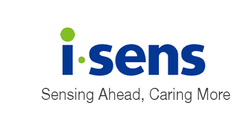
Natural Ways to Lower Blood Pressure
Natural Ways to Lower Blood Pressure
Hypertension, or high blood pressure, is known to be one of the leading causes of cardiovascular (ie, heart and blood vessel-related) disease (CVD) and death.1–3 Although various medications are available for hypertension management, making lifestyle changes is considered one of the most important ways to manage blood pressure. The 2020 Global Hypertension Practice Guidelines by the International Hypertension Society recommends the following natural ways to lower blood pressure.4
- Reduce Salt
Research has shown that higher sodium intake is associated with higher blood pressure, CVD risk, and coronary (ie, artery-related) events, while reduced sodium intake is associated with lower blood pressure, and in some cases, lower CVD risk.5–7 The 2020-2025 Dietary Guidelines for Americans (DGA) recommends daily sodium intake of less than 2,300 mg in healthy adults.8 Avoid or lower the consumption of foods high in dietary sodium to reduce daily sodium intake: processed foods, packaged foods, and restaurant foods.5
- Eat a Healthy Diet
Regularly consuming unhealthy diets is known to play a significant role in the development of hypertension and CVD.2,3,9 Consuming a healthy eating pattern like the DASH diet characterized by a high intake of fruits, vegetables, whole grains, fat-free or low-fat dairy products, poultry, fish, nuts, beans, and seeds can help lower blood pressure.10 Heart-healthy diets are also low in sodium, sweets and sugars, saturated fat, trans fat, cholesterol, and red meats. This pattern of eating provides a rich source of protein, fiber, calcium, potassium, and magnesium which are associated with lowering blood pressure.
- Limit Alcohol Intake
High alcohol consumption is known to play a significant role in the development of hypertension and CVD.2,3,9 The 2020-2025 DGA recommends adults of legal drinking age to limit alcohol consumption to <2 drinks/day for men and <1 drink/day for women.8 The American Heart Association (AHA) recommends people to limit their alcohol intake, avoid binge drinking, and for those who do not drink to not start drinking.4,5
- Lose Weight
Maintaining a healthy weight is important for heart health. Obesity is one of the leading causes of morbidity and mortality and is associated with various heart-related issues including dyslipidemia (ie, imbalance of blood lipid levels) and coronary artery disease.11,12 Research shows that higher body mass index is related to a higher risk of hypertension.13
- Quit Smoking
Smoking is known to be a risk factor for dyslipidemia, hypertension, and CVD.14–18 All major organizations including the AHA strongly recommend stopping the use of all tobacco products including e-cigarettes.19,20 Studies show that smoking cessation counseling, routine assessment of tobacco use, and pharmacotherapy are some effective ways to encourage cessation.
- Exercise
Regular physical activity is known to be beneficial for both the prevention and treatment of high blood pressure.4 Both aerobic and resistance exercises can help manage blood pressure. Engaging in moderate intensity aerobic exercises (eg, walking, jogging) for 30 minutes on most days of the week or resistance training 2-3 days a week can help reduce blood pressure.
- Reduce Stress
Studies show that chronic stress is associated with hypertension developing later in life.4 Consuming a healthy diet, engaging in regular exercises, getting adequate sleep, and utilizing relaxation techniques (eg, deep breathing exercises, music, and mindfulness exercises) can help reduce stress.21,22
|
References: |
(Disclaimer)
The content of this article is intended to provide a general information and knowledge on the subject matter. The views expressed in newsletters, articles, and blogs in the i-SENS USA website are not necessarily those of i-SENS Incorporated, i-SENS USA Incorporated or our publishers. Medical or nutritional information on i-SENS USA website is not intended to replace professional medical advice – you should always consult a specialist with any questions about your specific circumstances.





Add a comment